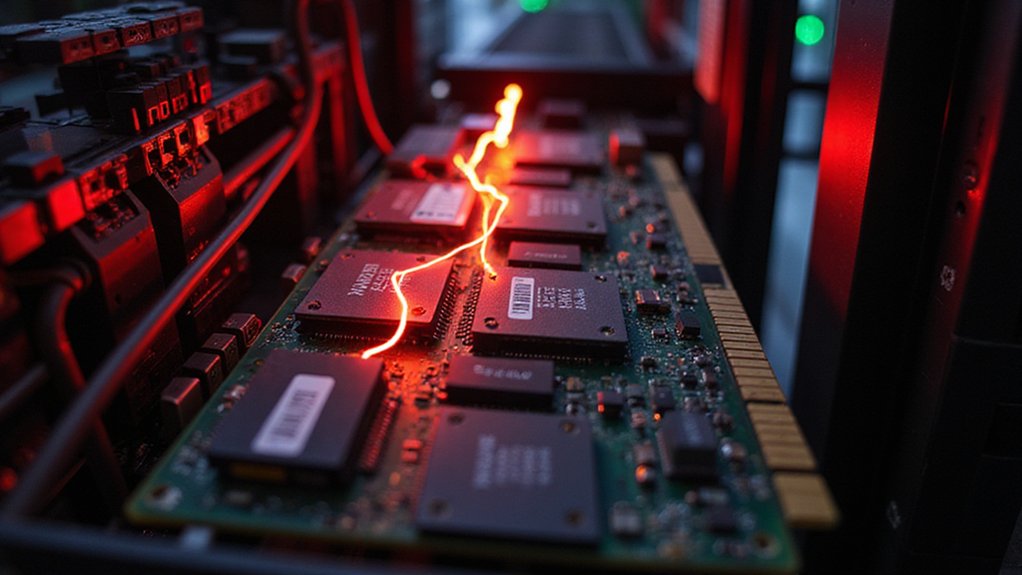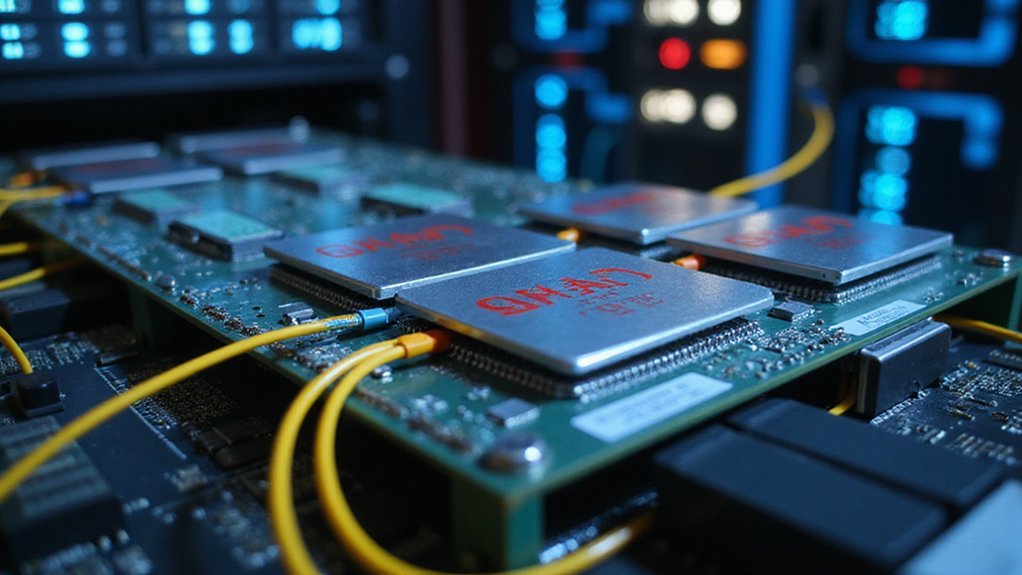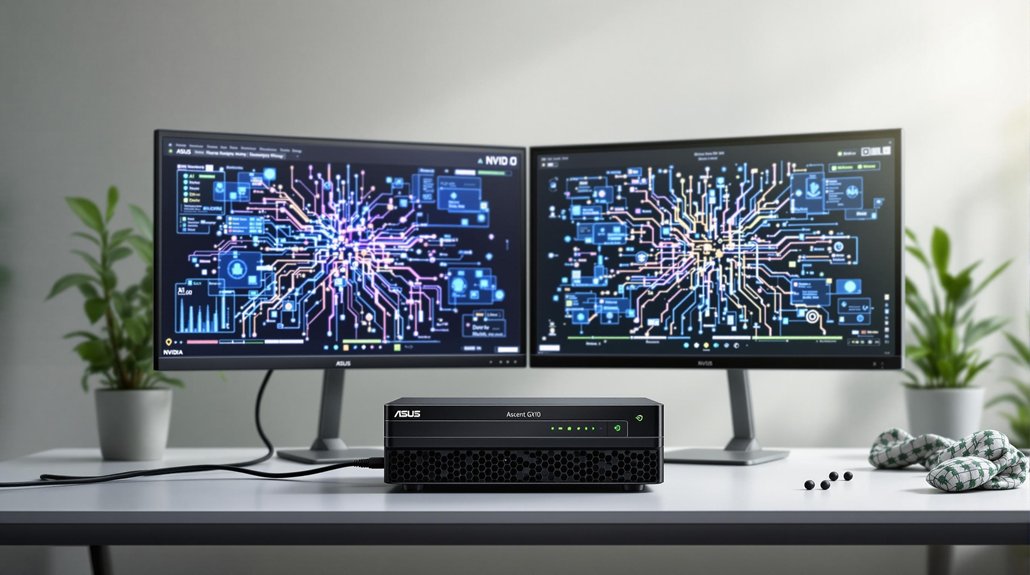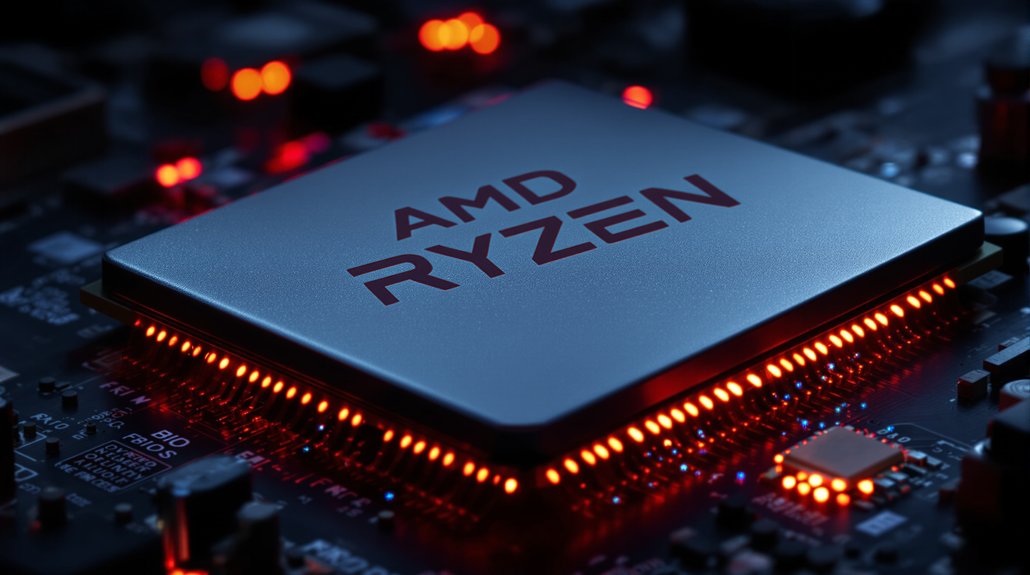While GPU manufacturers have long assured customers of their hardware’s security, researchers have blown that notion to bits with the first-ever successful Rowhammer attack on discrete GPUs. Dubbed “GPUHammer,” this breakthrough proves Nvidia’s high-end A6000 with GDDR6 memory isn’t as bulletproof as advertised. Turns out those expensive graphics cards aren’t immune to the same memory corruption techniques that have plagued regular computers for years. Shocker.
The attack works by repeatedly accessing specific memory locations at high speed – about 12,000 hammers per location – creating electrical disturbances that flip bits. Just like magic, except it’s physics. The researchers meticulously reverse-engineered the GPU’s memory layout and crafted specialized CUDA kernels to maximize impact. They achieved bit flips across all four tested DRAM banks. Not just one or two lucky hits – consistent, repeatable corruption.
High-speed memory hammering isn’t wizardry—it’s weaponized physics turning pristine GPU memory into a playground for bit-flipping chaos.
What’s the real-world impact? Pretty devastating. A single bit flip caused machine learning models to tank in accuracy by 56-80%. Researchers from the University of Toronto conducted these groundbreaking tests on NVIDIA GPUs. One tiny changed bit. That’s it. Researchers demonstrated the ability to degrade AI model accuracy from 80% to below 1% with their attack technique. Imagine training your fancy AI model for days only to have it silently corrupted without a trace. Cloud services where GPUs are shared between customers? Now a serious security concern.
Nvidia’s response has been predictable. “Turn on ECC,” they say. Error-Correcting Code can detect and fix single-bit errors, which helps. But not all GPUs have this feature, and the researchers suspect other Nvidia lines – including Blackwell, Volta, and Turing – might be vulnerable too.
Major cloud providers like AWS, Azure, and Google have been notified. They’re probably not thrilled about this revelation. The researchers plan to release their GPUHammer code publicly after the security embargo lifts, because nothing motivates fixes like public pressure.
The days of considering GPUs purely as computational workhorses with no security implications are officially over. These aren’t just gaming devices anymore – they’re the backbone of AI infrastructure, and now they’ve got a target on their back.
References
- https://www.bleepingcomputer.com/news/security/nvidia-shares-guidance-to-defend-gddr6-gpus-against-rowhammer-attacks/
- https://www.techradar.com/pro/security/nvidia-warns-users-some-gpus-could-be-at-risk-of-damaging-cyberattack-heres-what-we-know
- https://arxiv.org/html/2507.08166v1
- https://thehackernews.com/2025/07/gpuhammer-new-rowhammer-attack-variant.html
- https://www.theregister.com/2025/07/14/nvidia_a6000_gpu_gpuhammer/









